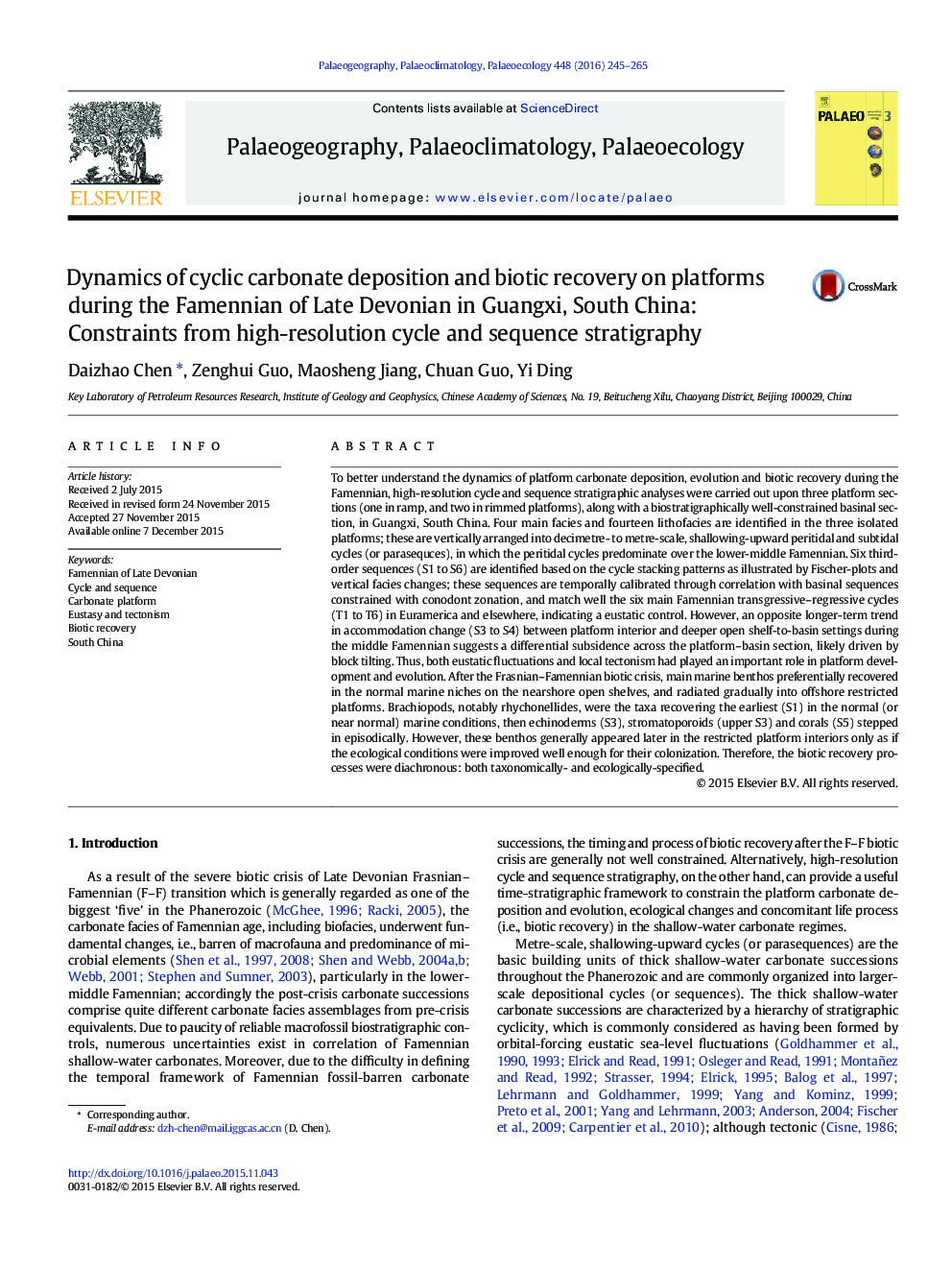| کد مقاله | کد نشریه | سال انتشار | مقاله انگلیسی | نسخه تمام متن |
|---|---|---|---|---|
| 4465852 | 1622143 | 2016 | 21 صفحه PDF | دانلود رایگان |

• Depositional facies and cycles investigated in the Famennian carbonates on three isolated platforms in South China
• Six depositional sequences revealed in the Famennian successions are equally correlated with those in the Famennian elsewhere.
• Platform carbonate deposition controlled by both eustasy and local tectonism
• Timing of biotic recovery constrained by cycle and sequence stratigraphic framework
• Biotic recovery initiated and radiated episodically in the open marine niche on platforms during sea-level rises
To better understand the dynamics of platform carbonate deposition, evolution and biotic recovery during the Famennian, high-resolution cycle and sequence stratigraphic analyses were carried out upon three platform sections (one in ramp, and two in rimmed platforms), along with a biostratigraphically well-constrained basinal section, in Guangxi, South China. Four main facies and fourteen lithofacies are identified in the three isolated platforms; these are vertically arranged into decimetre- to metre-scale, shallowing-upward peritidal and subtidal cycles (or parasequces), in which the peritidal cycles predominate over the lower-middle Famennian. Six third-order sequences (S1 to S6) are identified based on the cycle stacking patterns as illustrated by Fischer-plots and vertical facies changes; these sequences are temporally calibrated through correlation with basinal sequences constrained with conodont zonation, and match well the six main Famennian transgressive–regressive cycles (T1 to T6) in Euramerica and elsewhere, indicating a eustatic control. However, an opposite longer-term trend in accommodation change (S3 to S4) between platform interior and deeper open shelf-to-basin settings during the middle Famennian suggests a differential subsidence across the platform–basin section, likely driven by block tilting. Thus, both eustatic fluctuations and local tectonism had played an important role in platform development and evolution. After the Frasnian–Famennian biotic crisis, main marine benthos preferentially recovered in the normal marine niches on the nearshore open shelves, and radiated gradually into offshore restricted platforms. Brachiopods, notably rhychonellides, were the taxa recovering the earliest (S1) in the normal (or near normal) marine conditions, then echinoderms (S3), stromatoporoids (upper S3) and corals (S5) stepped in episodically. However, these benthos generally appeared later in the restricted platform interiors only as if the ecological conditions were improved well enough for their colonization. Therefore, the biotic recovery processes were diachronous: both taxonomically- and ecologically-specified.
Journal: Palaeogeography, Palaeoclimatology, Palaeoecology - Volume 448, 15 April 2016, Pages 245–265